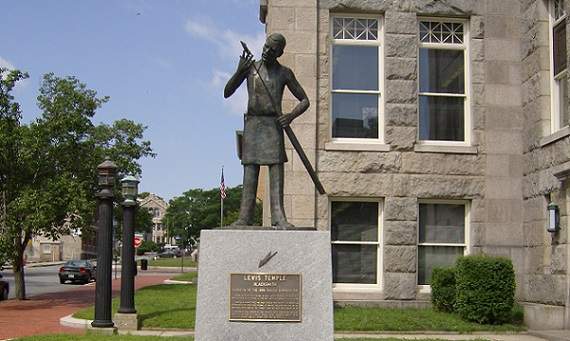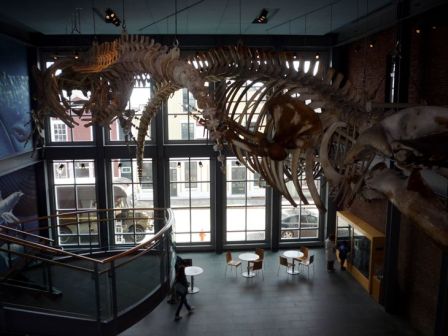In a letter to his army just prior to the end of the Revolutionary War, George Washington stated the importance of any person being able to voice their opinion, especially when the stakes are high. “… if Men are to be precluded from offering their sentiments on a matter…reason is of no use to us—the freedom of speech may be taken away—and, dumb and silent we may be led, like sheep, to the slaughter.”
It’s not an accident that the freedom of expression was enshrined in the very first amendment to the Constitution. The Founding Fathers were aware of the importance of such a protection, especially after being oppressed by the British, whose sedition laws could land a person in court or prison. For them, this guarantee was foundational. As Ben Franklin phrased it, there can be “no such thing as public liberty, without freedom of speech.”
When the Bill of Rights was ratified in 1791, America was one of only a few countries to offer such a freedom. For centuries throughout the world, the legality of speech was what the nearest authority happened to think it was. Even today, there are over a dozen nations with various levels of censorship—including places where things like criticizing the government or blasphemy can get you killed.
The simple, unambiguous edict that congress shall make no law “abridging the freedom of speech” is one of the things that has made the U.S. a beacon of liberty and an example of what a just and free society might look like. Today, however, this most basic of human rights is at the epicenter of a political struggle. One extreme is using it as a cloak from under which they can spread disdainful and incendiary messages; the other is taking hammer blows to it in the name of justice. Radical movements—the vile and the virtuous—will come and go, but there must be a concerted effort to understand the First Amendment, and resolve to defend it.
Freedom of Expression, while a glorious concept, is not absolute. Over the years, the Supreme Court has examined ways in which this carte blanche of public language can have ramifications. With a utilitarian spirit, these judges have imposed restrictions; all of which weighed the right to speak versus the rights and safety of others. Among the handful of caveats are “fighting words,” obscenity, threats, defamation, supporting terrorism, and words that could incite violence or endanger the public.
Unfortunately, there is a degree of ambiguity in these decisions (none perhaps more so than Potter Stewart’s obscenity standard—“I know it when I see it”). For example, hate speech —which is protected—seems similar to fighting words or words designed to incite. Recently, with the reemergence of Neo-Nazis and the Ku Klux Klan, there have been protests and gatherings where this nebulous distinction is back under the microscope. Should vast groups be able to congregate and spew racist garbage in public? What if they’re doing it while armed and marching with torches? Or at night near a predominately black Church? We can see how quickly the situation gets murky.
In instances like these, there needs to be a broad range of appropriate speech—which we must allow, and a line over which demonstrators cannot cross. People ought to be able to gather peacefully and say whatever they like. Whether anyone else agrees with or likes what they have to say is immaterial. As Noam Chomsky said, “If we don’t believe in freedom of expression for people we despise, we don’t believe in it at all.”
Words may be protected—even the most hateful ones—but actions, as they say, speak louder. The circumstances in some instances, like Charlottesville, shift the situation onto different terrain. The crucible of a mob with flags, torches, slogans, weapons, combined with the time and place, make it reasonable to conclude that some speech and assembly are purposeful provocations.
Charlottesville was not about the free exchange of ideas, it was a demonstration—possibly even a warning. This manner of speech should be outlawed—or at the very least confined to private areas.
One point worth noting is that the First Amendment protects civilians from government interference with speech. But when the government shirks their responsibility or otherwise allows what many consider dangerous, some take matters into their own hands. Several activist groups have marshaled considerable crowds to oppose and drive back these dirty relics from the Jim Crow era.
The motivation is understandable: for decades America has been taking steps to exterminate racism, and much like other infestations, when vermin reappear so brazenly on the kitchen floor, it’s only natural to want to destroy them before they lay eggs and spread. When these counter-protesters stand against the volatile, racist rantings of an angry mob, it is difficult to see their efforts as anything other than heroic. And it’s all too easy to overlook their methods.
The problem, however, is the noble desire to shield people from hatred and to subdue what might be considered evil has repercussions. First, who decides what speech should be prohibited? How do we know exactly what is inappropriate? How much force is allowed when fighting a perceived enemy? There is a disconcerting level of subjectivity in play.
Sure, it’s easy enough to denounce Nazis and White Supremacists—especially when they are behaving violently—but mob mentality circumvents reason; crowds respond viscerally, lose control, and ride emotional waves to unseen shores (and the tide of public opinion can turn back the other way at any moment). In the process of fighting for the marginalized, these groups are slowly tightening the noose around the first amendment. They are, in other words, throwing the baby out with the bathwater.
Not every instance of protest has been of the anti-nazi variety. There have been a slew of demonstrations on college campuses which have held events featuring conservative firebrands. Mobs destroyed property at UC Berkeley when Breitbart’s Milo Yiannopoulos was slated to speak. Later, the school canceled Ann Coulter because they feared similar outbursts. These were seen as victories on the far left. They managed to silence the views of their enemy—the alt-right.
This type of behavior is egregious and embarrassing and should be repudiated by everyone, especially liberals. It is nothing more than the militant stifling of opposing views.
Peaceful demonstrations and shows of solidarity are one thing, burning down or even threatening to shut down campuses is another. People like Milo, Coulter, Limbaugh, Tomi Lahren, or Sean Hannity do espouse some political beliefs that we may find repugnant, but the answer is not to respond with Molotov cocktails, fists, and bottles of urine. Allow them to speak, let their views stand naked, and reasonable people everywhere will see them for what they are. Defeat them with rational argument. Considering the left generally prides themselves on being the more intellectual side, this should be both easy and enjoyable.
When we stop speech by force we galvanize the other side, allow them to play the victim, validate their message, and appear intellectually weak in the process. When the initial response to any opposition is to sling the most virulent words in the arsenal (bigot! racist!), we generalize, devalue the meaning of those words, find ourselves at a loss when we encounter the real thing, and end the hope of any productive conversation.
If we resort to these tactics we are setting fire to more than campuses or cars, we are setting fire to the only sacred thing in our secular government: the Constitution.
When true evil presents itself, everyone should vehemently oppose it—often by any means necessary. But we can’t assume all who aren’t in line with our views are evil. Allow people to speak, understand their positions, and then dismantle them. But never restrict peaceful expression by force, for then Freedom of Speech is only available to whomever has the bigger mob.
We are in a war of ideas, and in this war free speech can be perilous, but as Thomas Jefferson once said, “I prefer dangerous freedom to peaceful slavery.”


